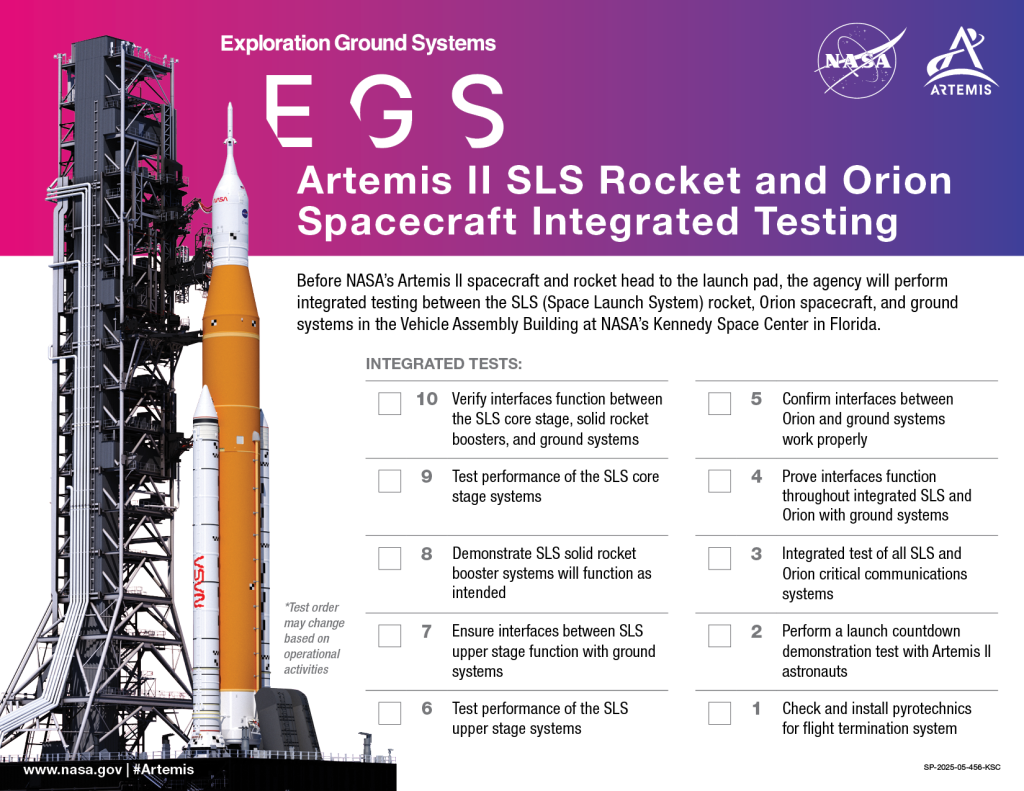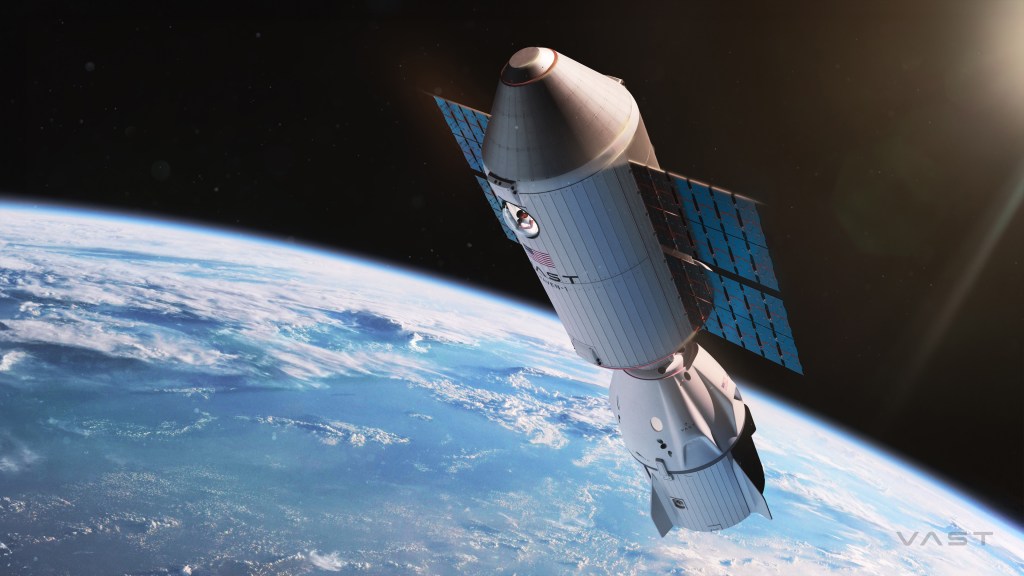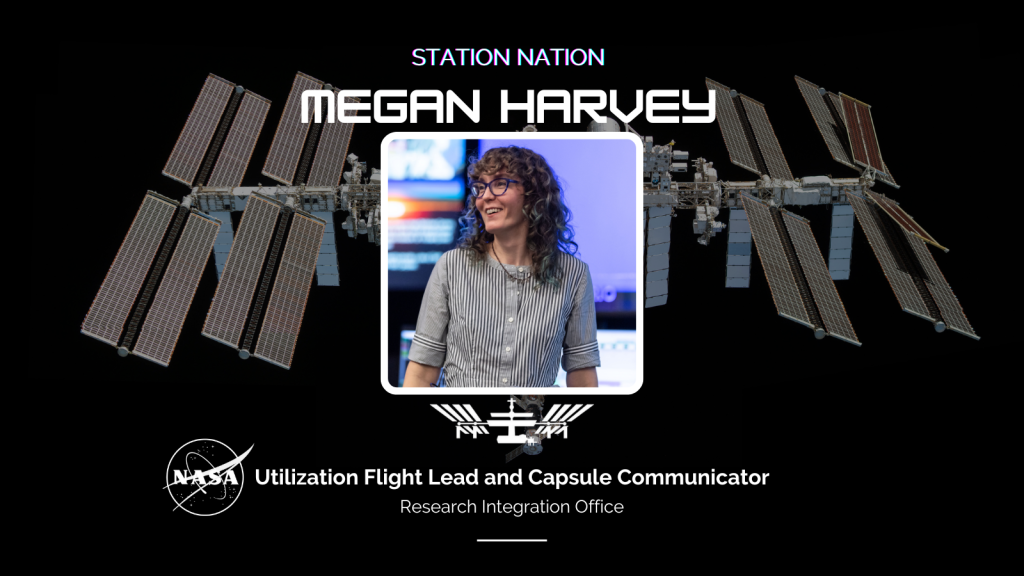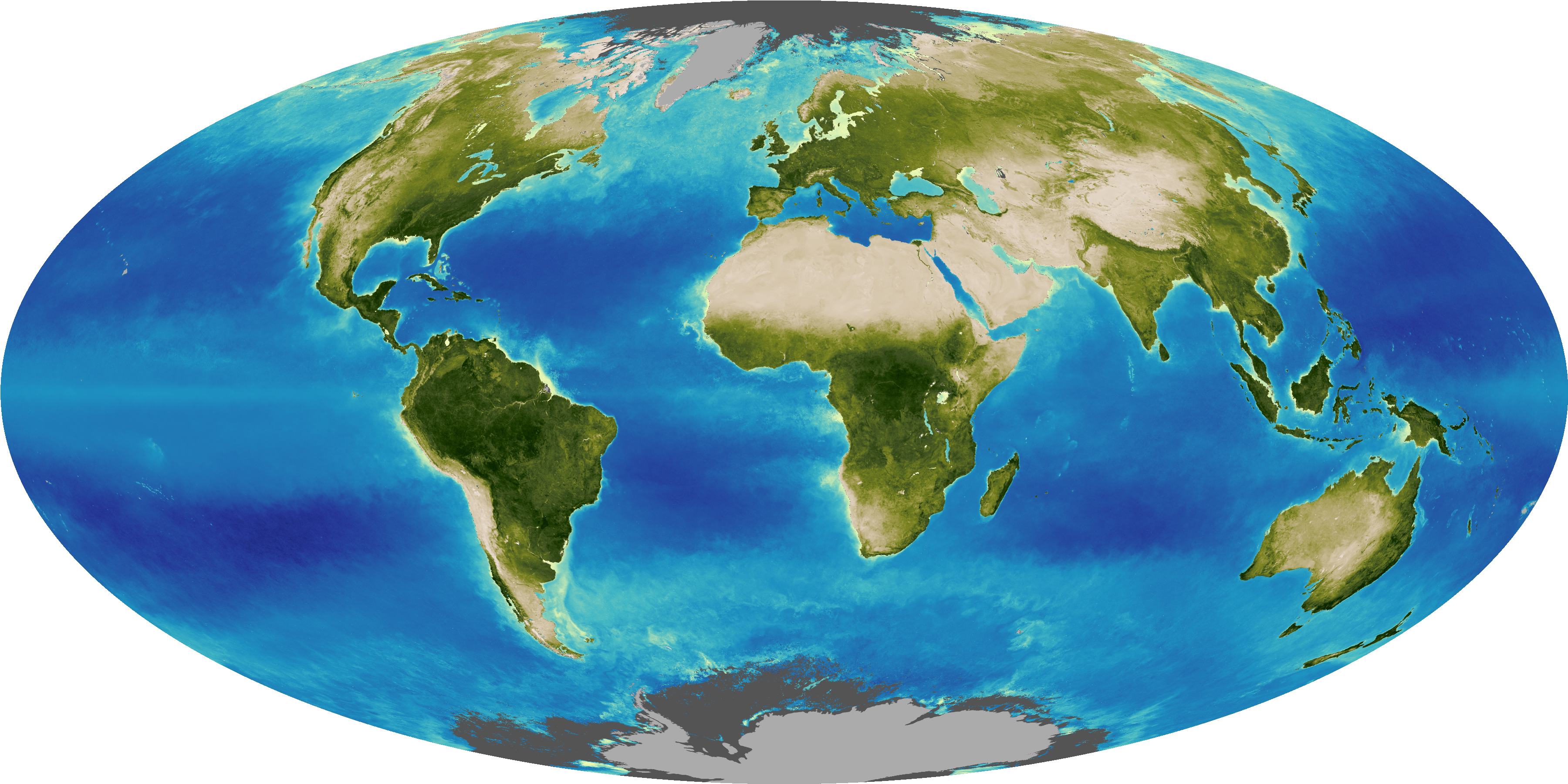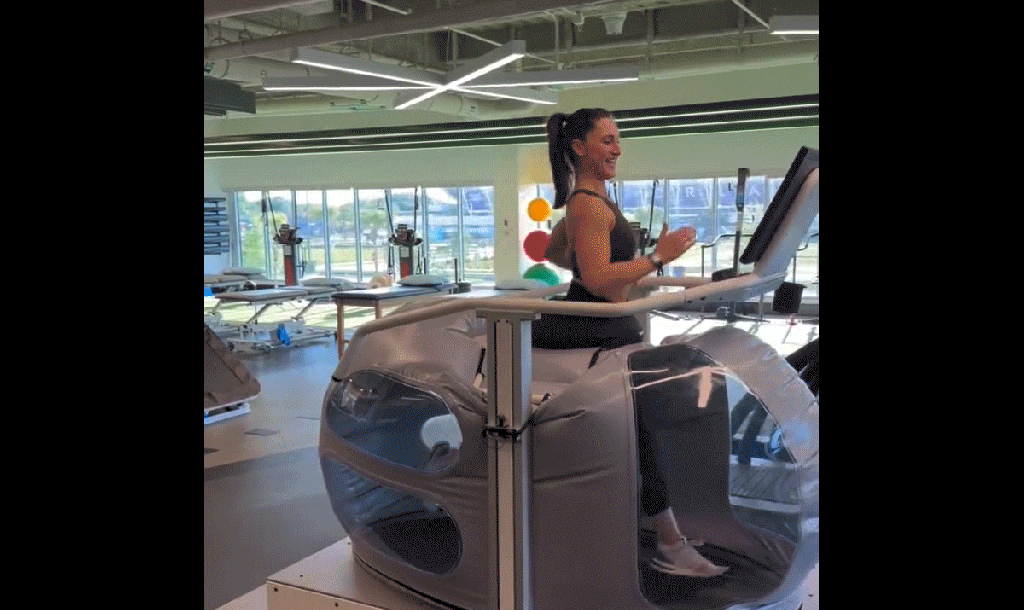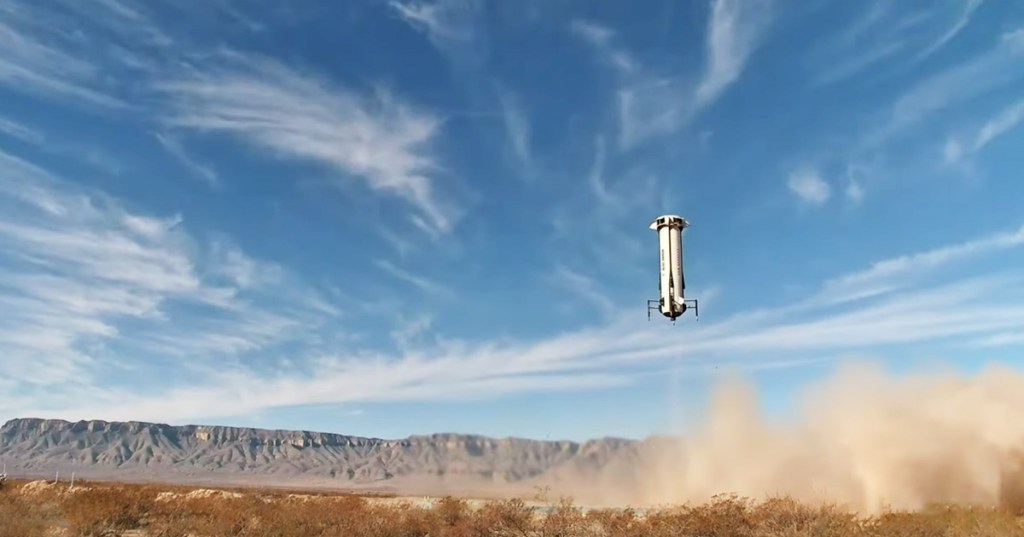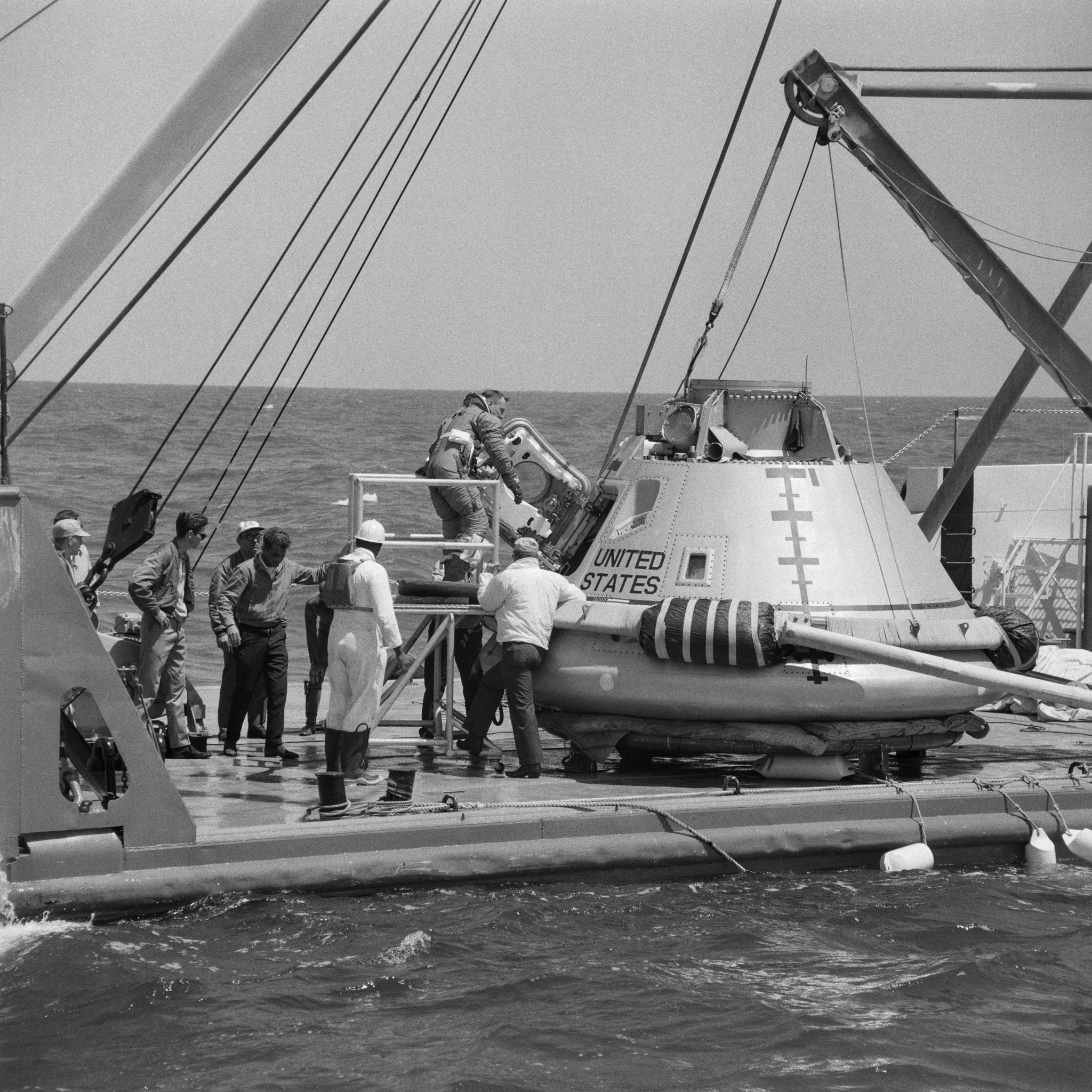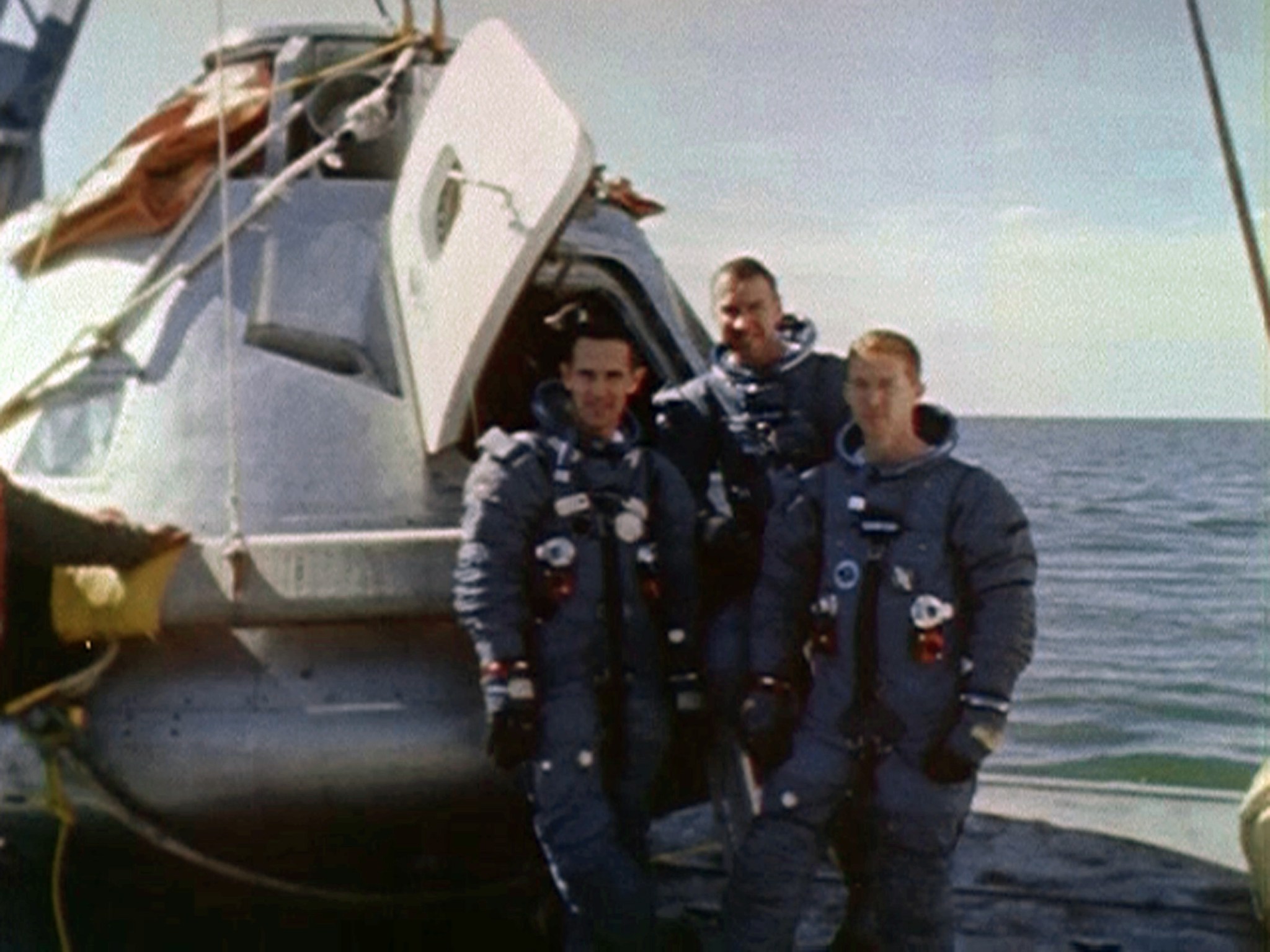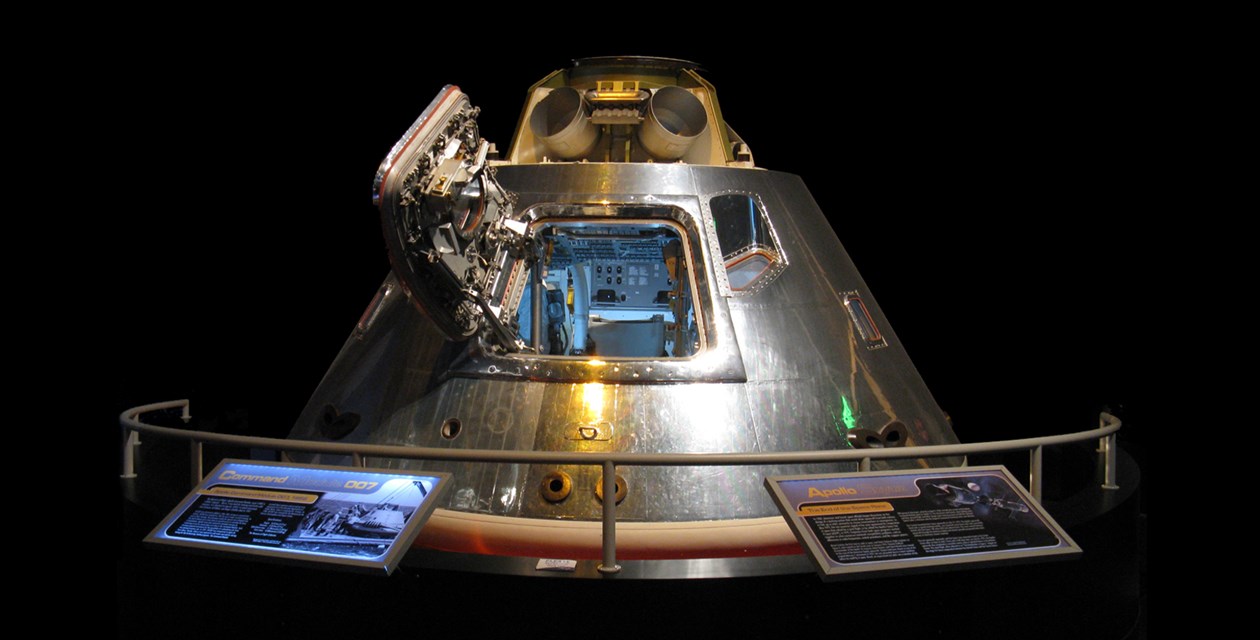50 years ago, on the way to the Moon…
As one of the tests to certify Apollo 7 to carry out the first crewed Apollo mission, the spacecraft had to demonstrate its seaworthiness after splashdown.
Between April 5 and 7, 1968, astronauts James Lovell, Stuart Roosa and Charles Duke participated in a 48-hour recovery test of an Apollo Command Module (CM) in the Gulf of Mexico. Engineers from the Landing and Recovery Division of the Manned Spacecraft Center (MSC) designed the test to see how an Apollo spacecraft fared if the recovery of the capsule and crew were delayed for up to two days. In the first part of the test, after the crew entered the spacecraft, engineers lowered the CM into the water in the Stable II (nose down) position. The spacecraft’s self-righting system of three inflatable bags then rotated it into the Stable I (nose up) position. For the next two days, the crew tested the spacecraft’s systems as well as their own endurance as they bobbed in the swells of the Gulf of Mexico, while in constant communication with the nearby Motor Vessel Retriever. The crew reported that while they did not “recommend the Apollo spacecraft for any extended sea voyages” they encountered no serious habitability problems during the 48-hour test.
The Apollo capsule used in this recovery test, CM-007A, was the first production CM delivered to MSC in April 1966. It served primarily as a module for crewed post landing tests. The onboard configuration such as crew couches duplicated a flight vehicle as much as possible, but the instrument panel was just a mockup.
This successful postrecovery test, a critical milestone to clear Apollo 7 for its mission in October 1968, completed another important step toward achieving the Moon landing before the end of the decade.
The refurbished Apollo CM-007A is on display at the Museum of Flight in Seattle, WA.





